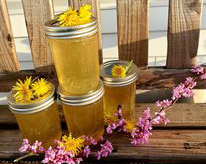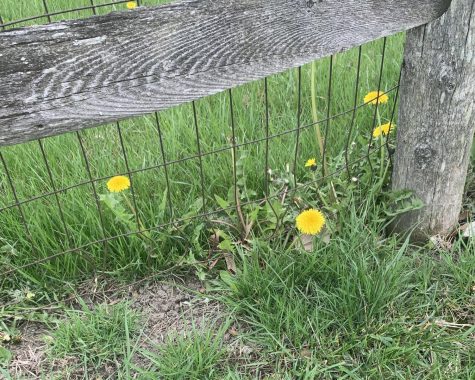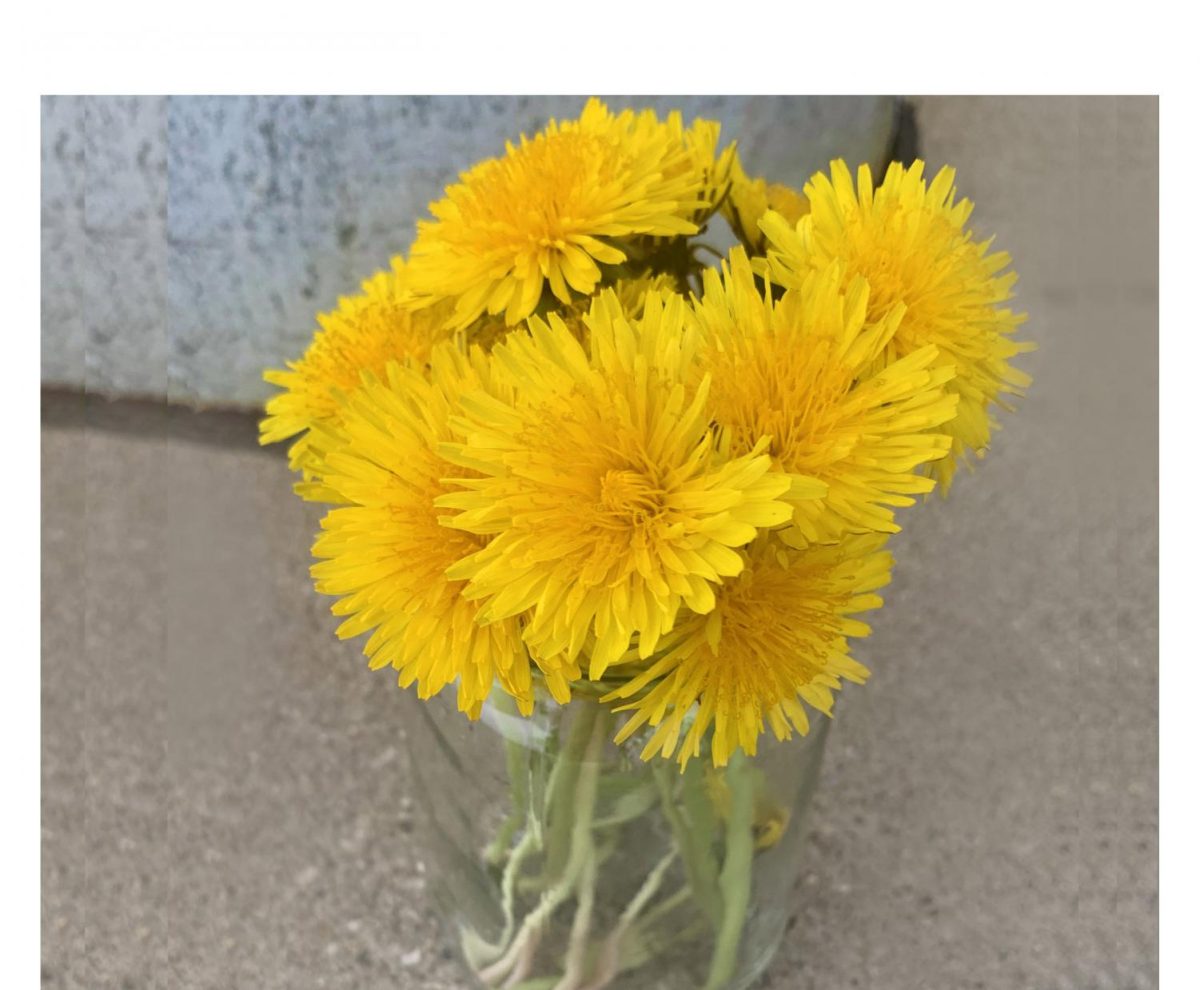Pesky dandelions are beneficial to nature, health
The ubiquitous yellow flowers may be the most plentiful flowering plant in Ohio, according to an Ohio State University weed guide.
April 30, 2021
As with many things, those seemingly annoying weeds that interrupt your verdant expanse of lawn in the summertime, have a silver lining. Dandelions are beneficial not only to other parts of nature, including your lawn but also to human health.
Dandelions are edible in their entirety: the taste of their young leaves resembles spicy arugula and their dried roots can be roasted and brewed into a coffee-like beverage. There are many ways to incorporate them into recipes for teas and wines, and they also have medicinal healing benefits such as reducing cholesterol, aiding weight loss and detoxifying the liver. That is, those not treated with chemicals herbicides in attempts to remove them.
Oxford resident Sammie Bullock tried her hand at making dandelion jelly. She learned the technique from watching “Tim Farmer’s Country Kitchen” television show, which gave her a deeper appreciation for what many wild plants can be made into. Bullock shared her jelly-making success in a thread of comments related to dandelion recipes on the “Oxford Talk” Facebook page.

According to the Ohio State Perennial and Biennial Weed Guide, the dandelion may be the most plentiful flowering plant in the state, not to mention being an excellent source of vitamins A and C. The guide also says the plant’s name comes from the French “dent de lion” – lion’s tooth – referring to the jagged-edged leaves.
“It’s nice to know there’s food growing everywhere around you,” Bullock said. “I definitely have a higher appreciation for not just what dandelions can be made into but for what all kinds of wild plants like redbud flowers too.”
Other community members don’t feel as fondly in regards to these plants. Some are anxiously awaiting the Oxford Country Club’s golf course to be sprayed for the removal of dandelions and others are bummed by the excess amount of the yellow flowers in their yard.
“I know they are ugly I need to get out and spray again,” commented one unnamed local resident who came to the door of his West Withrow Street house when he noticed an Observer reporter taking pictures of the flowers along his front sidewalk.
Most environmental enthusiasts, however, would feel the opposite. Without these “weeds,” bees would miss out on a vital source of springtime nectar. Additionally, holding back on spraying pesticides over the lawn to kill the dandelions, will allow them to do their job of fertilizing the grass on their own.
Dandelions disrupt the level of order that so many people crave in life, said Kevin Wilson of Shademakers Garden Center, in Oxford. The way in which they are viewed has a lot to do with the space they are in, he said. Dandelions can easily outcompete their garden neighbors in the quest for nutrients and light and can handle stressful natural conditions better than many crops.
“If you like a lush lawn, dandelions will slowly and inevitably crowd out your intended plantings,” Wilson said. “They spread over the grass and shade out the competition with their wide leaves. Their deep roots steal any available moisture, causing the grass to stress from drought”
The question of the beneficence of dandelions to your lawn is rigged because it depends on your personal definition of lawn, Wilson said.

“Some now think of a ‘lawn’ as an expanse of open green area that is mowed to maintain a functional surface to play on, entertain on, or accent larger scale plantings around the home,” Wilson said. “This is my lawn. In this lawn, weeds are not looked on with disdain until they get out of hand and affect areas around them where they should not be.”
Others are a little more poetic and accepting of the stray plants. Oxford resident Tabitha EllieMae Mason said on her Facebook page that the dandelion represents the sun, the moon and the stars. The yellow flower represents the sun, the puffball represents the moon and the dispersing seeds represent the stars.
Ah yes, those puffy and easily spread seed heads that appear when the flowers fade! Once dandelions dry they become the “white fluff balls” that can be blown on to make any wish come true. And while you’re making that wish, the flowers are flying like parachutes to a new land.
According to that Ohio State weed guide cited above, the estimated number of seeds produced per dandelion plant each year is between 3,000 and 23,000. No wonder there is no shortage of these yellow blossoms. The small seed heads are taken with the wind and carry seeds all around.
Next time you find yourself straining a nerve in your back digging these flowers out of the ground or polluting your yard to kill them, stop and toss some with a little oil and vinegar for a salad instead!
























